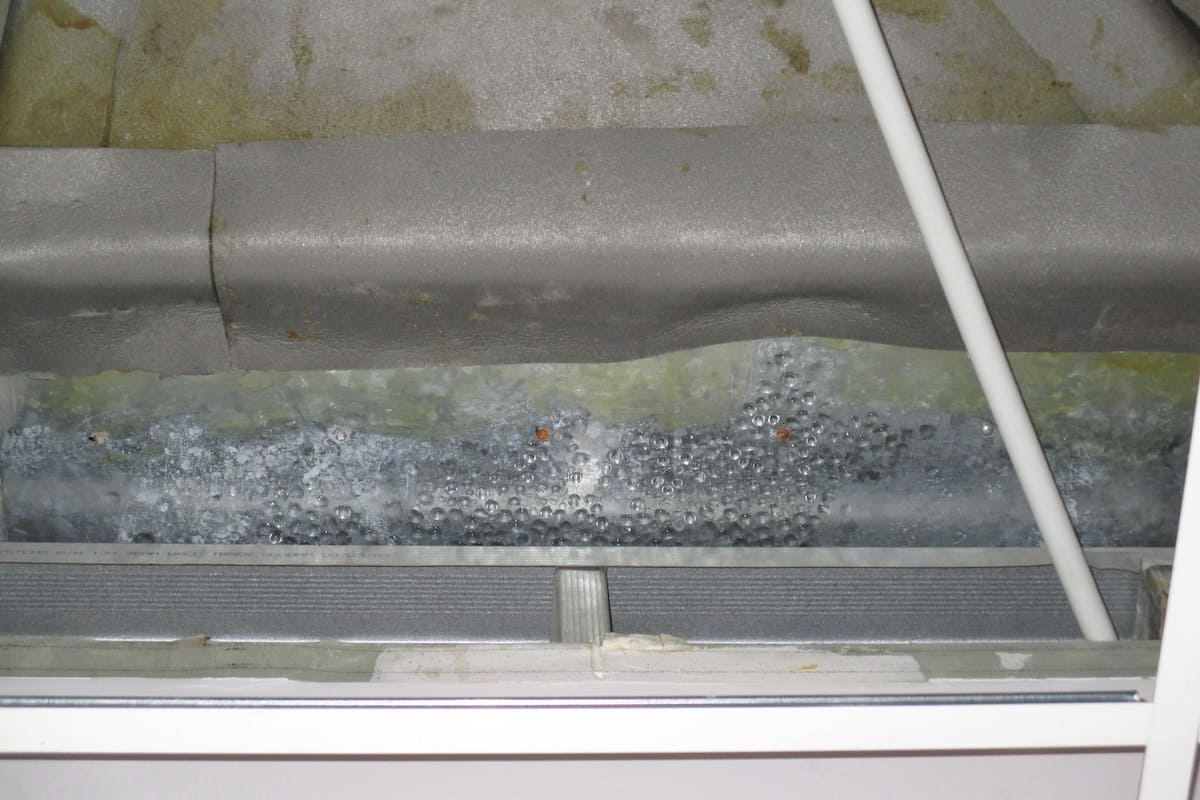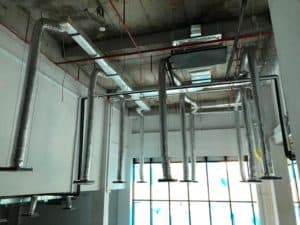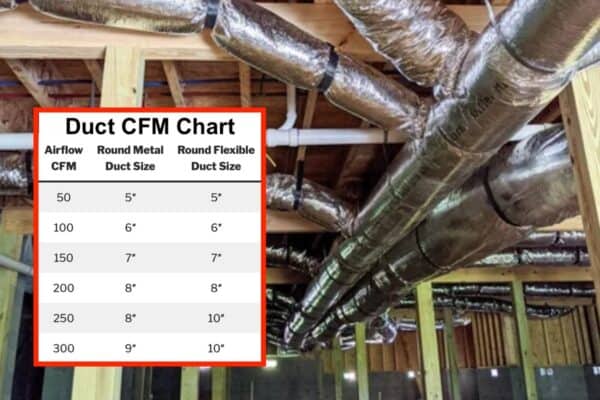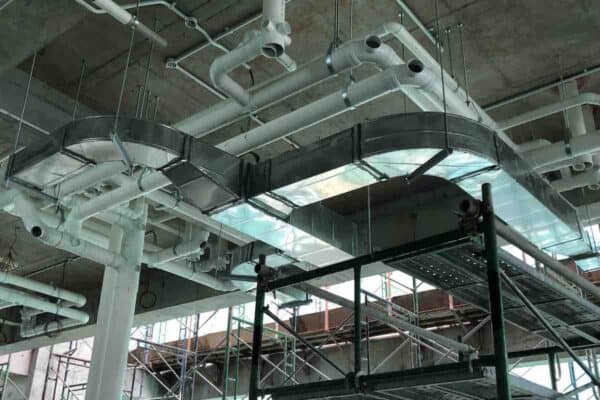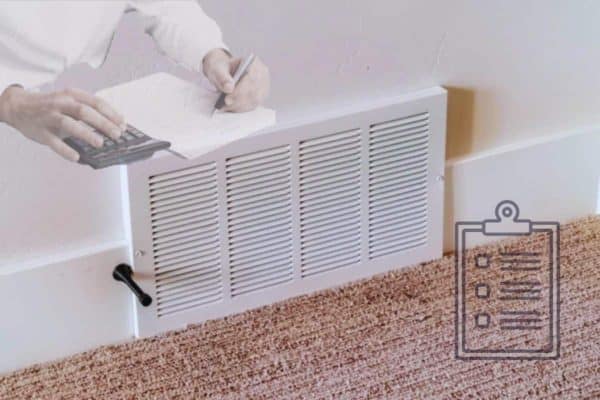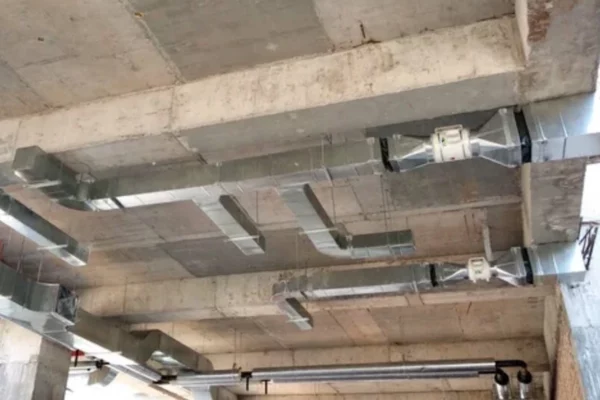Why Your HVAC Ducts Are Sweating? (Root Cause)
HVAC ducts are not meant to be sweating. Water droplets formed on the external surface of your HVAC ducts indicate a sign of problems. So, why your HVAC ducts are sweating?
HVAC ducts sweat because the temperature of the external surface of the ducts is lower than the dew point temperature of the air inside the room. When the water vapor in the air contacts with the cold surface of the ducts, it turns into liquid water droplets until they can’t hold themselves together, they start to drip, replicating sweat.
Most people don’t understand the root cause of why their HVAC ducts are sweating. Every problem has a root cause and by knowing the root cause, we can fix the problem once and for all.
1. Duct Surface is Too Cold
The root cause of why your HVAC ducts are sweating is because the ducts’ external surface is too cold. By too cold, I mean the duct surface temperature is below the dew point of the air inside your room where the duct is sweating.
Most of the time, the air traveling inside your ducts is at a temperature around 57°F (14°C). If your ducts are not insulated, their external surface temperature can be around 57°F (14°C) too since metal is a great thermal conductor.
Now, let’s determine at what conditions, your ducts will definitely sweat according to science. Check out the below table to see if any of the conditions match with your room:
| Temperature | Relative Humidity | Dew Point | Duct Surface | Sweat? |
|---|---|---|---|---|
| 22°C | 45% | 9°C | 14°C | No |
| 24°C | 45% | 11°C | 14°C | No |
| 24°C | 55% | 14°C | 14°C | Yes |
| 26°C | 60% | 18°C | 14°C | Yes |
| 26°C | 65% | 19°C | 14°C | Yes |
| 28°C | 75% | 23°C | 14°C | Yes |
| 30°C | 85% | 28°C | 14°C | Yes |
As you can see, when the external duct surface temperature is at or below the dew point temperature, sweat happens. So, the goal here is to make sure the external duct surface temperature stay above the dew point temperature.
However, the dew point temperature is different based on the temperature and relative humidity. In other words, it is different for everyone. If your house has more people, the relative humidity will be higher and thus, your ducts sweat easier.
2. Airflow is Too Slow
After we know the root cause of the problem, now is the time to identify what is causing the problem. Logically, your ducts don’t sweat right after the installation. Chances are you’ve been using the HVAC system for quite some time and now, the ducts start to sweat.
Most of the time, the reason why your duct external surface temperature is getting colder and colder until it falls beyond the dew point of the air inside your room and starts sweating is that the air traveling inside your ducts is getting slower.
There are 4 common reasons why the airflow is slowing as below:
- Filter is dirty – Dirty filter is blocking and slowing down the airflow.
- Cooling coil is dirty – Many people clean the filter but not the cooling coil. Cooling coil can get dirty too. It’ll block and slow down the airflow as wel.
- Fan blade is dirty – Dust can stick onto the fan blade, causing the fan to spin slower and slow down the airflow.
- Fan motor is weakening – Fan motor will degrade over time. It’ll spin slower and slower, which slow down the airflow, until it stops completely.
- Inside of the duct is dirty – Dust can accumulate inside the duct and slow down the airflow.
For dirty filters, cooling coil and fan blades, you may clean it by yourself if you’re a hands-on person. Cleaning the filter is easy but the cooling coil and fan blade require you to dismantle a few components. As for the fan motor and the inside of the duct, you most likely need to hire a professional to help.
But, why low airflow will cause your ducts to sweat? It is because when the airflow is slow, it passes through the cooling coil slower thereby allowing more time for the cooling coil to absorb the heat from the air. Consequently, the supply air temperature drops, causing the duct external surface temperature to be lowered.
As we already know when the duct’s external surface temperature falls below the dew point of the air, condensation will happen and sweating will occur.
3. Indoor Air is Too Humid
If the airflow is not the issue, then you may proceed to check if your room (where the duct is sweating) is too humid. If you’re living in a humid climate place, any infiltration of outside air will increase the humidity level in your room.
Besides, enclosed rooms such as the basement usually lack ventilation and thus, the humidity level is higher. Even though the outside air is humid, staying in an enclosed room can raise its humidity level to around RH 85%.
Furthermore, check if you have any exposed water such as too many plants, too large of a humidifier and possibly, pipe leakages. In addition, you may try to close the toilet door to reduce the humidity level in your room.
As you might have noticed from the above table, the higher the humidity, the higher the dew point and thus, your ducts sweat easier. Also, the duct surface temperature affects the possibility too.
Sometimes, a slightly lower airflow plus a slightly higher humidity level is enough to cause your ducts to sweat.
4. Insulation is Needed
If none of the above match your situation, then you probably need to insulate your ducts. In countries like Malaysia and Singapore, we always insulate our ducts, no matter it is for the supply air or the return air.
The reason is that we are living in a hot and humid climate. On average, our indoor air temperature is around 28°C and the relative humidity is around 85%. Thus, the dew point temperature is around 25°C.
If we don’t insulate our ducts, we are guaranteed to see our ducts sweat. So, we insulate our ducts, usually with a minimum of 1″ thick fiberglass to raise the duct’s external surface temperature so that it doesn’t fall below 25°C.
5. Duct Insulation Degraded
If you already have your ducts insulated, you may check if your duct insulations are degraded. Degraded insulations will not prevent as much heat transfer as before. Thus, your ducts’ external surface temperature may be already below the dew point of the air inside your room.

Insulations made of fiberglass are very sensitive to compression. When you press the fiberglass insulation to 1/2 of its original thickness, you basically halved its insulation capability.
Furthermore, most duct insulations are weak to water. If your room is very humid all the time, water vapor will slowly cause damage to your duct insulations, reducing their thickness and insulation strength.
Combined with low airflow, humid indoor air and degraded duct insulations, you are certain that your ducts will sweat. Therefore, you’ll need to scrub off damaged insulations and paste new insulations on your ducts.
Final Thought
Most of the time, sweating ducts are fixed by simply cleaning the filter and the cooling coil and the air conditioner or air handler. By bringing the airflow back to the normal speed, you brought the supply air back to the designed temperature which in turn matches with the original duct insulations thickness if you have.
If you have anything to add (or ask) about this topic, leave a comment down below!


